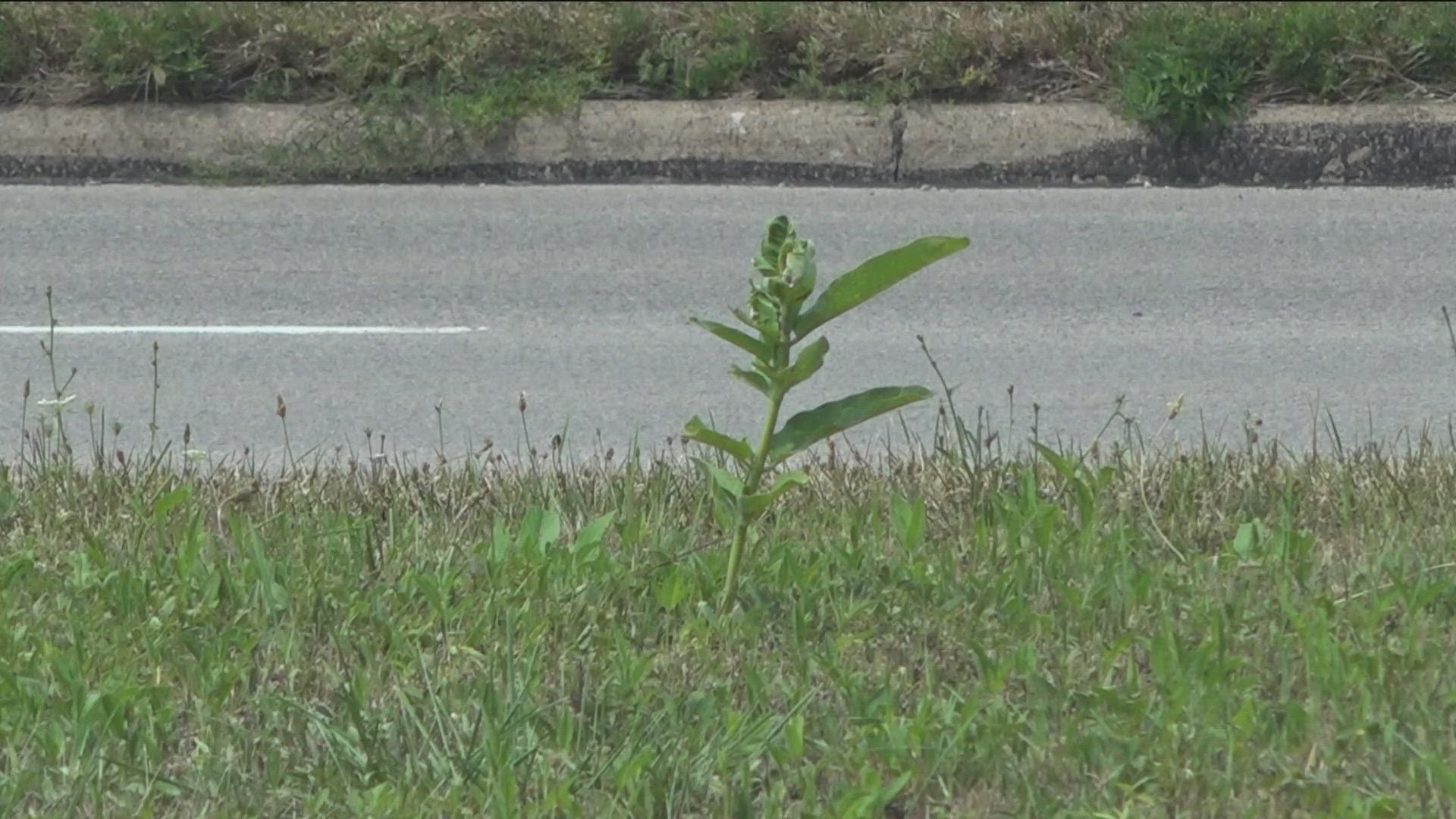TOLEDO, Ohio — In an email to zoo members, the Toledo Zoo said Friday it was the city's decision to mow down the institution's native prairie installation on the Anthony Wayne Trail median, despite the zoo's advocacy to keep it.
Meanwhile, the city has maintained that they are committed to natural resources preservation, and stated their aims for the median include further environmental-sound beautification projects, which they claimed the zoo has walked away from.
In the email, the zoo said the city expressed interest in "alternative landscaping" in the median, which had hosted native plants near Toledo Zoo property for more than a decade, after concerns were raised about its appearance and upkeep. The email did not specify if the concerns came from city leaders or from the community.
Zoo officials said they felt replacing the prairie was "economically and environmentally unnecessary," and said they met with the mayor's office and other city officials to advocate for the prairie's preservation.
However, the city ultimately decided to remove the native plant installation and mowed over it.
Response from city officials
The city of Toledo provided a response to WTOL 11 Friday, officials said their goals were to reimagine the median of the Anthony Wayne Trail that provided the same and more benefits of the prairie, as well as year-round beautification:
"We began meeting with the Toledo Zoo at the end of last fall to reimagine the median of the Anthony Wayne Trail," the spokesperson said. "The goal was to find a design that used the same native plants to support wildlife, increased the number of trees in the median to provide additional environmental benefits (attached calculations show carbon sequestered, runoff avoided, and rainwater intercepted over one year and over 20 years), and provided 4-season visual interest to create a gateway that remained beautiful all year round.
The city claimed in their statement that they worked with the zoo to come up with new design concepts, but that the zoo has since stepped away from the project. City officials provided documents and images of proposed plans for the median, which are embedded below:
They also added that the prairie has been kept mowed since last October, and maintained that environmental and protecting natural resources are a priority of the administration.
"Ultimately, the City of Toledo is responsible for the upkeep and maintenance of the right of way space, just as we have been for the last decade," the city spokesperson said. "We value the Zoo as a community partner who shares our values and hope we can return to a place of collaboration.
At least one city council member has spoken out about the mowing.
In a Facebook post Thursday, Toledo City Council Member Nick Komives offered the following statement, expressing his disappointment in the city's decision and adding that he did not agree with it:
The Native Prairie Project has beautified our city for years. I did not agree with the decision by the Administration to mow the trail and I voiced my concerns then. I’m happy to continue to voice those concerns.
Not only does this project save taxpayer dollars through lower mowing costs, it also soaks up excess rain water that helps to keep our Lake clean for generations to come. As the Council Chair on Sustainability, I look forward to seeing native plants on the trail once again and urge the City and the Zoo to find a solution for us all.
Native prairie benefits
According to the Toledo Zoo, the native prairie provided substantial environmental benefits, including stormwater management, carbon sequestration and soil enrichment; it also saved on city mowing costs and was installed with the city's support, zoo officials said.
In a video attached to the email, the Toledo Zoo said Wild Toledo, which operates out of the zoo, established the prairie installation projects 11 years ago. The prairies, installed around northwest Ohio, attract pollinators to the region and provide a habitat for many species, including the threatened Monarch butterfly.
The zoo said the Anthony Wayne Trail prairie was one of the first prairies Wild Toledo installed.
"That prairie was pretty much self-sufficient," said Director of Plant Conservation Dr. Ryan Walsh in the video. "It required very, very little maintenance on our part."
Walsh said in the video that while the plants are still rooted in the soil, the city plans to continue mowing it.
"Unfortunately, the city of Toledo decided that they did not like the look of the prairie, they did not like the fact that it was providing ecosystems services, and they wanted to take it in a different direction," he said. "We actually didn't remove the prairie, it's still under the soil, and there are still some plants coming up, but the city has decided to mow this prairie and continue mowing it throughout the season."
Walsh also claimed maintaining formal landscaping would cost 30 to 40 times more than allowing the prairie to remain. He also added that the prairie is capable of absorbing metric tons of CO2 in the atmosphere, and referenced the prairie as a source of beauty in the area.
Walsh said Wild Toledo plans to continue its prairie projects in other parts of northwest Ohio. In the email, the zoo said some of its collaborations include partnerships with Dana, Owens-Illinois and Owens Corning.
WATCH MORE FROM WTOL 11

